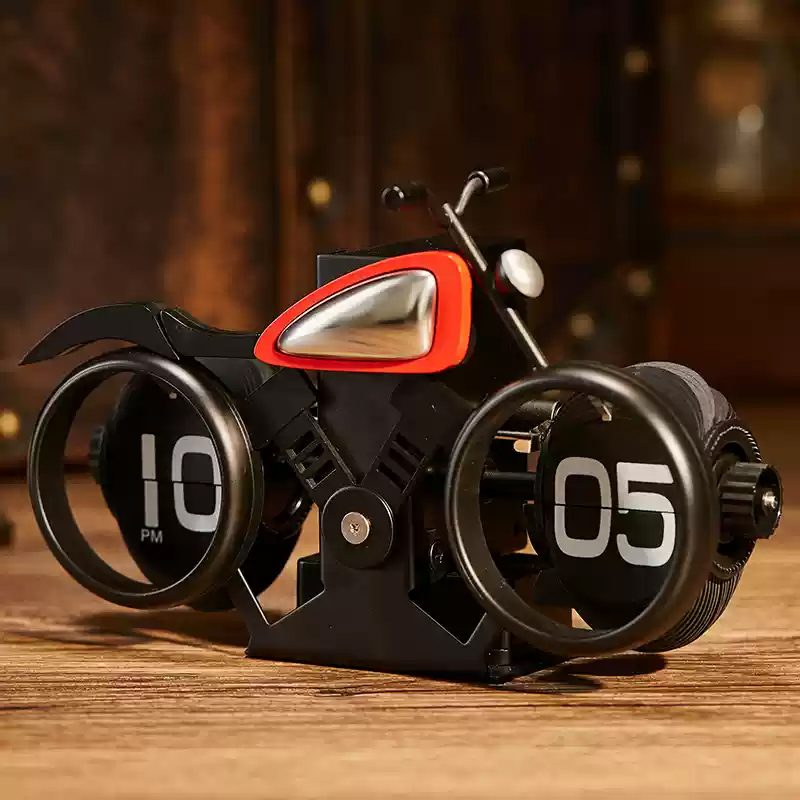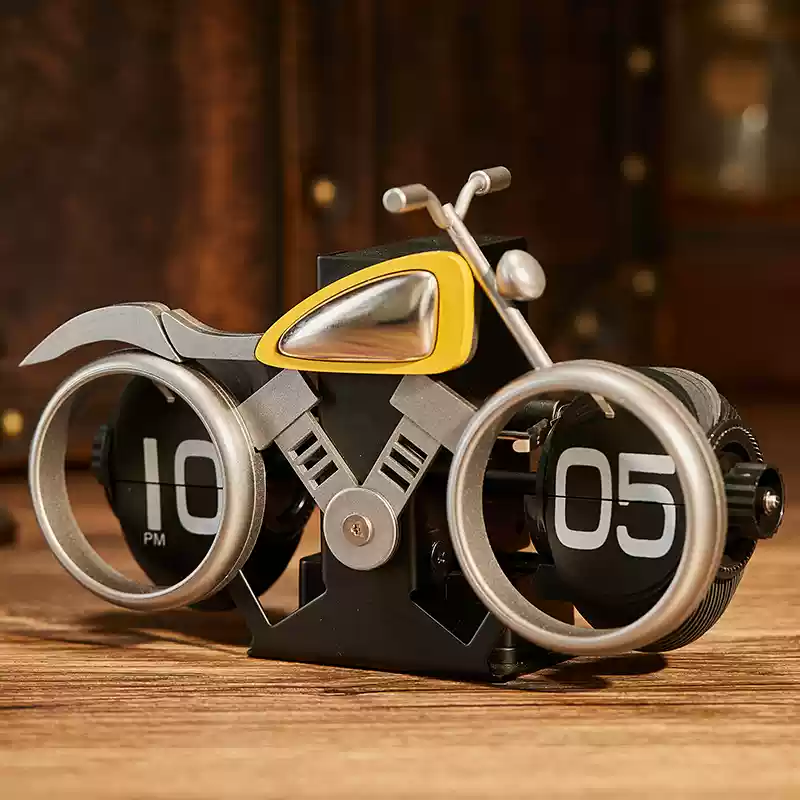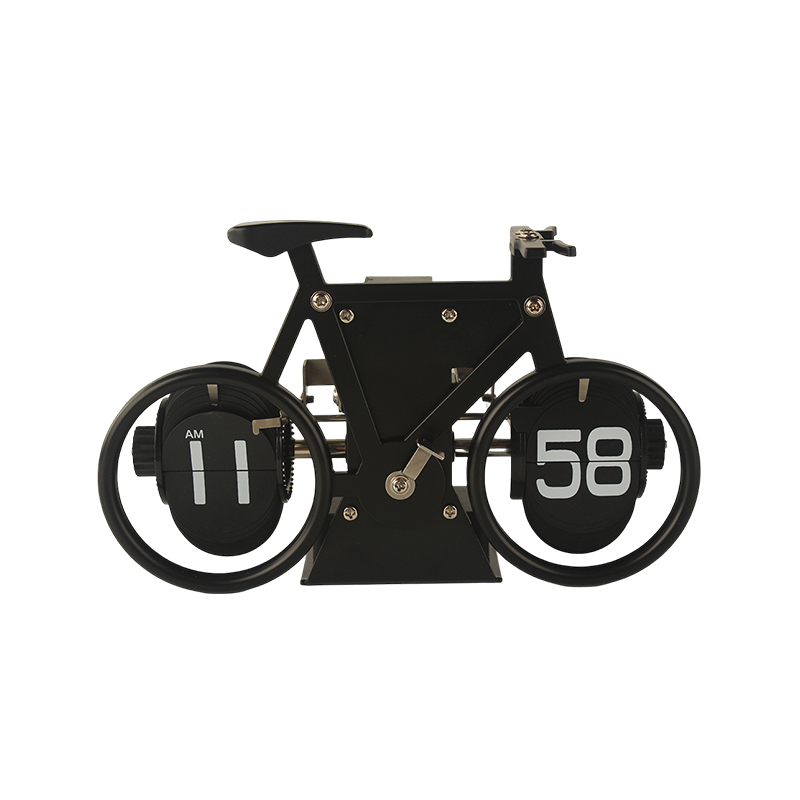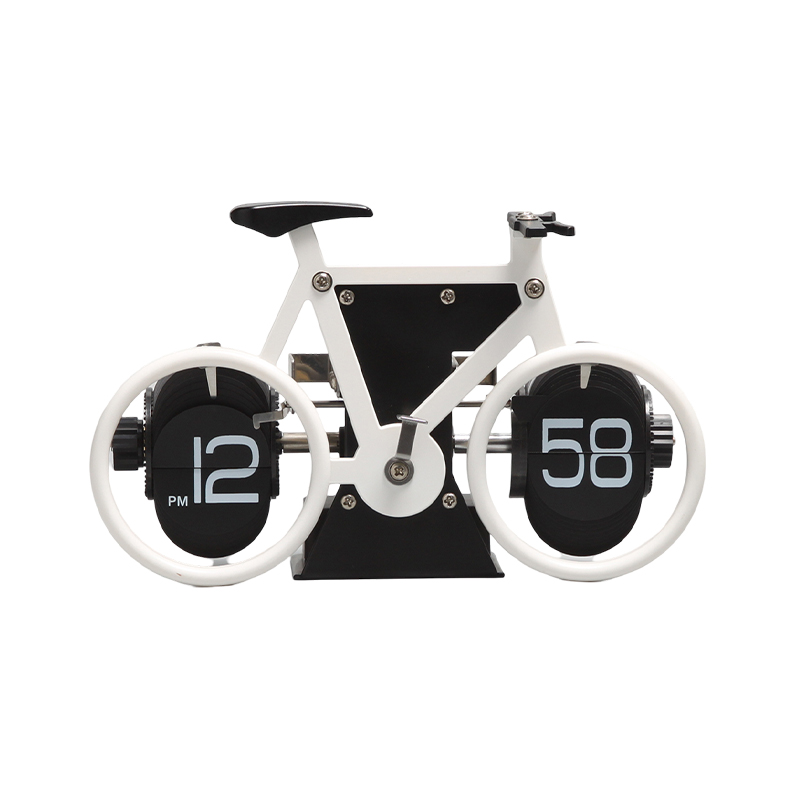How does the vertically stacked page structure of a flip clock improve space utilization?
Release Time : 2025-10-13
The flip clock's vertically stacked panels reshape the traditional clock's flat layout through a three-dimensional layout, achieving dual optimization of time display and mechanical aesthetics within a limited space. This design transcends the horizontal limitations of traditional clocks by extending the display unit vertically, creating a multi-layered time display system and providing a more flexible timepiece solution for the home.
The core advantage of the vertical stacking structure lies in reducing the horizontal footprint while maintaining full functionality. Traditional flip clock panels are typically arranged horizontally in a single layer, occupying a desk or wall space equivalent to the panel's width. The vertical stacking design, however, significantly reduces the overall width of the clock by arranging the hour and minute panels in layers. For example, a double-layer stacking structure can reduce the horizontal footprint by nearly half, making it ideal for small desks, narrow bookshelves, or limited wall space. This spatial compression does not sacrifice readability; instead, the three-dimensional layering enhances the layered nature of the time information.
From a mechanical perspective, vertical stacking places higher demands on the drive system's optimization, but it also offers a revolutionary breakthrough in space utilization. Traditional horizontally arranged pages require a synchronized drive mechanism to ensure consistent page turning, while vertical stacking requires a precision gear train to synchronize the upper and lower pages. While this design increases transmission complexity, the modular layout concentrates the drive components at the bottom, requiring only lightweight connection structures for the upper pages, reducing overall thickness. Some high-end models even embed the drive motor in the base, using a vertical shaft for silent page turning, further improving space efficiency.
In terms of visual presentation, the vertical stacking structure creates a unique time-reading experience. The overlapping layers of pages create a dynamic and layered numeral flow. As the minute page turns, the hour page remains stable in the background, creating an aesthetic contrast between static and dynamic. This design not only saves space but also enhances the visual perception of the passage of time through three-dimensional composition. Especially in dimly lit environments, the backlight filtering through the gaps between the pages creates a gradation of light and shadow, further amplifying the spatial depth of the vertical structure.
Installation flexibility is another major advantage of the vertical stacking design. Traditional horizontal flip clocks typically require a fixed wall or stable surface for support, while vertically stacked models, with their center of gravity positioned downward, can adapt to a wider range of non-standard installation scenarios. For example, some models feature an adjustable stand, allowing them to stand upright on a desktop, tilt against a wall, or even attach to metal surfaces via magnetic attachments. This flexibility stems from the vertical structure's optimized center of gravity distribution, allowing the clock to maintain stability while minimizing its horizontal footprint.
The vertical stacking design also benefits maintenance convenience. While traditional horizontal flip clocks require disassembly of the entire panel to replace the panels, the vertical structure's modular panel slot design allows users to remove individual panels for replacement or cleaning. This design not only simplifies maintenance but also extends the device's lifespan—if a panel wears out due to long-term use, the entire display module doesn't need to be replaced, reducing future maintenance costs.
The flip clock's vertically stacked panel structure, through its three-dimensional layout, strikes a balance between space utilization, mechanical efficiency, visual aesthetics, and ease of use. It not only retains the unique mechanical ritual of the flip clock, but also adapts to the modern home's demand for efficient use of space through structural innovation, making it an ideal choice for time display devices in small space scenes.







